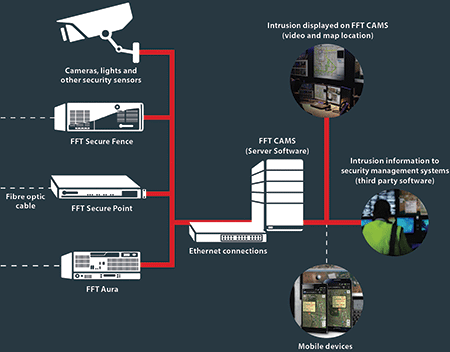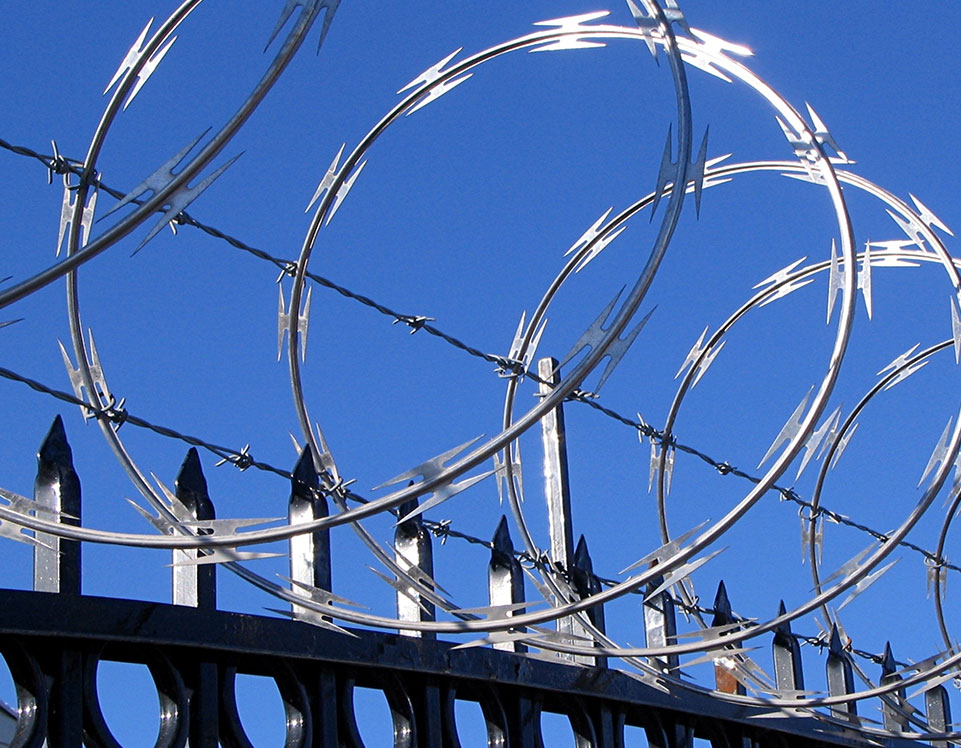How Security Fibers Are Used to Enhance the Effectiveness of Security Surveillance Systems
Wiki Article
Why Fiber Optic Protection Equipments Are the Future of Security
The change to fiber optic security systems notes a considerable improvement in the world of defense, driven by their outstanding data transmission capabilities and resilience to exterior disturbances. As the landscape of safety evolves together with emerging innovations such as AI and IoT, the potential for fiber optics to enhance and redefine safety and security facilities ends up being significantly evident.Advantages of Fiber Optic Solutions
One of the key benefits of fiber optic systems is their remarkable bandwidth capacity, which facilitates the transmission of huge quantities of data over cross countries without substantial loss. This characteristic is especially useful for safety and security applications that require the continual surveillance and transfer of high-def video feeds, sensing unit data, and other essential info. Fiber optics can suit the growing demands of modern-day safety systems, guaranteeing that data continues to be intact and dependable.Additionally, fiber optic wires are much less susceptible to electro-magnetic interference, which can be a considerable concern in settings with different electronic tools. This resistance improves the honesty of the data being transmitted, consequently reducing the threat of data violations or system failures. Fiber optic systems are inherently much more secure than typical copper cords, as tapping right into a fiber optic line without detection is exceedingly hard.
The toughness of fiber optic cable televisions also contributes to their allure. They are immune to environmental aspects such as dampness and temperature fluctuations, minimizing upkeep costs and enhancing system durability. On the whole, these advantages position fiber optic systems as a robust and effective selection for modern safety and security frameworks, making certain reputable and safe information transmission.
Boosted Data Transmission Speed

The capacity to send vast amounts of data rapidly assists in the smooth assimilation of high-def video feeds and advanced analytics. Safety and security systems can now refine and examine details in real-time, improving reaction times and situational recognition. Additionally, fiber optic connections sustain longer transmission ranges without degradation of signal high quality, making them excellent for expansive safety networks.
The raised speed of fiber optic systems not only improves the effectiveness of safety procedures but additionally reduces latency. This is especially crucial in critical circumstances where timely decision-making can protect against safety and security breaches or reduce prospective threats. As organizations remain to focus on safety and security and effectiveness, the demand for quick and reputable information transmission will certainly solidify fiber optic systems as a cornerstone of contemporary security framework.
Resistance to Disturbance
Fiber optic security systems regularly demonstrate exceptional resistance to electro-magnetic interference, a vital advantage in settings prone to digital noise. Unlike traditional copper cords, which can be negatively influenced by electromagnetic areas, radio frequency disturbance, and other forms of electric disruption, fiber optic cords utilize light to transfer data. This intrinsic building makes sure that the signals remain clear and unaltered, no matter bordering electronic task.Using glass or plastic fibers in fiber optic modern technology produces an obstacle against disturbance, allowing for trusted information transmission even in tough scenarios such as fiber security system commercial facilities, metropolitan areas with high electronic traffic, or places near radio towers. This characteristic substantially reduces the probability of signal destruction or loss, making fiber optic systems particularly appropriate for protection applications where integrity and accuracy of information are paramount.
Furthermore, this resistance to disturbance boosts the overall performance and dependability of security systems, making sure that surveillance and sharp systems function perfectly. In a world where safety is significantly intimidated by sophisticated innovations, the durability of fiber optic systems sticks out as a crucial attribute, enhancing their status as an important element of contemporary safety and security facilities.
Cost-Effectiveness Gradually
Considerable expense savings can be accomplished in time with the application of fiber optic safety and security systems. While the initial investment may appear greater contrasted to typical copper-based systems, the lasting economic advantages emerge through reduced functional and upkeep expenses (fiber security). Fiber optic cords are inherently more sturdy and much less susceptible to environmental aspects, which translates to reduce substitute and fixing costs over their lifespanFurthermore, fiber optic systems call for less power to run, which further lowers energy expenses. Boosted data transmission capacities enable less repeaters and amplifiers, minimizing devices financial investment and enhancing installation processes. The scalability of these systems additionally adds to cost-effectiveness, as organizations can broaden their safety and security framework without incurring considerable additional expenditures.
One more variable to consider is the boosted performance in tracking and feedback capabilities that optical fiber offer. Boosted real-time data transmission can bring about quicker incident reaction times, possibly mitigating losses and responsibilities connected with protection violations. Altogether, the lasting benefits of fiber optic safety and security systems not just warrant the initial expenditure yet also position them as an economically sensible selection for companies seeking durable defense solutions.

Future Technologies in Security
Advancing modern technologies are set to transform safety systems, integrating expert system (AI) and machine discovering to boost risk discovery and feedback capabilities. These developments will certainly permit security systems to evaluate huge quantities of information in real-time, recognizing patterns and anomalies that indicate prospective dangers. This aggressive approach will enable faster decision-making and much more efficient occurrence actions.In addition, the unification of the Internet of Things (IoT) is leading the way for interconnected security devices, providing extensive monitoring and tracking. Smart sensors can communicate info regarding environmental changes, while automated alerts can alert security employees immediately of questionable activities.
Moreover, the advancement of biometric innovations will even more bolster safety systems. Facial acknowledgment, fingerprint scanning, and retina identification are coming to be a lot more advanced, providing layers of verification that are challenging to bypass.
Conclusion
In verdict, fiber optic safety systems represent a substantial improvement in protection modern technology, using unequaled data transmission rate, resistance to electromagnetic disturbance, and long-lasting cost-effectiveness. As the need for advanced security options continues to expand, the integration of optical fiber with arising innovations such as AI, IoT, and biometrics will certainly additionally enhance safety infrastructures (fiber security). The mix of these innovations will ensure a much more safe and secure and responsive setting, solidifying fiber optics as a keystone of future safety and security systemsReport this wiki page